Dental Implants in London
At Marylebone Smile Clinic, we offer dental implants in London to patients who have missing or lost teeth. Our dental surgeons will evaluate the condition of your mouth and help you to perform this implant procedure in a safe and relaxed way. We use the latest equipment and tools for your dental complications. Our experts will improve your overall appearance and confidence with dental implants.
Why Choose Us for Dental Implants in London?
We continually strive to be known as the best dental implant clinic in London, UK. Our patients’ satisfaction is reflected in our outstanding 5-star Google Business rating and countless genuine, glowing testimonials. We are also Accredited in Tooth replacement techniques with the BACD. This is the highest standard available within dental implants involving a rigorous external assessment of our dental procedures and clinical results.
Our lead dentist Dr Sahil Patel, has been trained by international leaders in dental implantology, including Dr Giovanni Zucchelli, Dr Istvan Urban, and Dr Massimo Simion. The latest in bone and gum grafting methods have been made available Marylebone Smile Clinic by using the best known practices from the world leaders in the field. If you have lost bone due to infection, gum disease, age or trauma – careful and precision bone grafting is available with our lead dentist and is knowledgeable team. Gum grafting is a rapidly developing and emerging subject in dentistry, and the best gum grafts available in London and the UK are performed by the clinicians who have trained to the highest standards.
Whether you’re searching for the best dentist for dental implants near you or are simply exploring your options, our expert team on Harley Street is here to guide you. We’ve proudly helped thousands of patients across London and nationally regain their confidence and oral health with affordable, premium-quality dental implants.
What Are Dental Implants?
Dental implants are a revolutionary form of dental technology that offers numerous benefits to those with missing teeth. They provide a long-term solution to replacing missing teeth, offering more stability and durability than other forms of treatment. Dental implants act as artificial tooth roots, supporting replacement teeth such as crowns, bridges or dentures.
Dental implants, or tooth implants, are constructed from medical grade titanium, making them smooth and durable in your mouth. Each implant is placed precisely into your jawbone, meaning it’s not at risk of falling out, and you don’t have to remove it, like dentures. Our London clinic provides expert treatment for dental implants that are safe, non-toxic, and ‘biocompatible’. They are entirely compatible with your bone as it grows around the implant and osseointegrates into the fixture itself.
Dental implant procedures have a long history of success. First provided over 30 years ago, dental implants have evolved to provide a treatment option with high success rates. Over 95% of implants are still successful over a period of 15 years, meaning that they’re an excellent, long-term investment. Now considered the number one option to replace a missing tooth, a dental implant procedure replaces any troublesome gaps between your teeth, restoring your smile and confidence.

Our lead implantologist, Dr Sahil Patel graduated from Bristol Dental Hospital and has since established himself as an expert in advanced procedures involving dental implants, bone grafting and gum grafting. Sahil has qualified as an Accredited member of the British Academy of Cosmetic Dentistry. The rigorous assessment criteria demand perfect results when replacing the front and back teeth. Particular attention is given to the cosmetic outcome in terms of colour matching, gum contouring and blending in ceramic work to be invisible against a natural tooth. There are only a handful of Accredited Cosmetic dentists in the UK and he is one of the only Accredited Principal dentists available in London.
Advanced implant and gum training has been alongside world leaders Istvan Urban, Giovannni Zucchelli, Massimo Simion and Martina Stefanini. The instruction imparted by these international specialists has positioned Dr Sahil to deliver exceptional results that are stable for the long-term. Dr Sahil has also been published in the International Journal for Esthetic Dentistry and has been peer-reviewed on the subject of occlusion (bite modification) and aesthetic dentistry. He is one of the three British clinicians to be approved for publication in IJED and this is a reflection of the high standards at Marylebone Smile Clinic. Further publications include articles on implantology in Dental Update and teaching as part of various educational programmes.
Here are a few pictures of our incredibly satisfied clients who chose our dental implants made in our prestigious clinic in the centre of Harley Street, London.
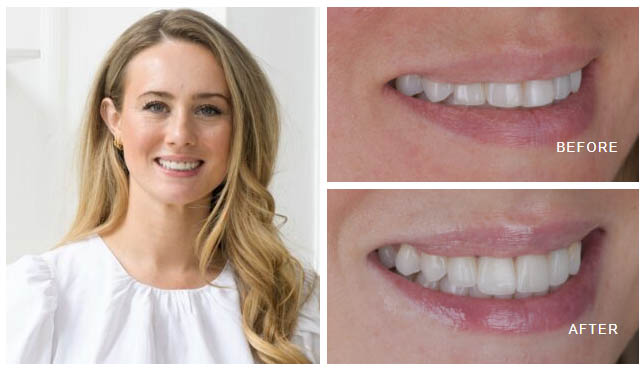
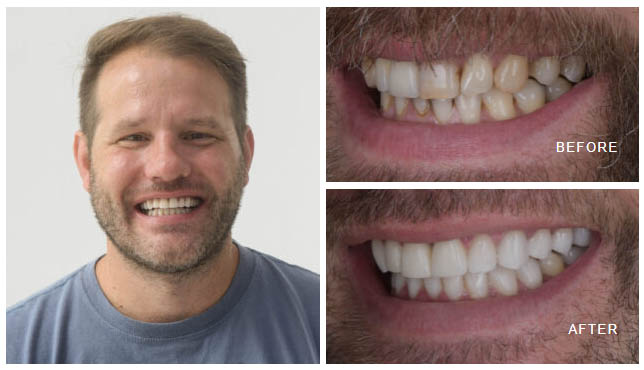


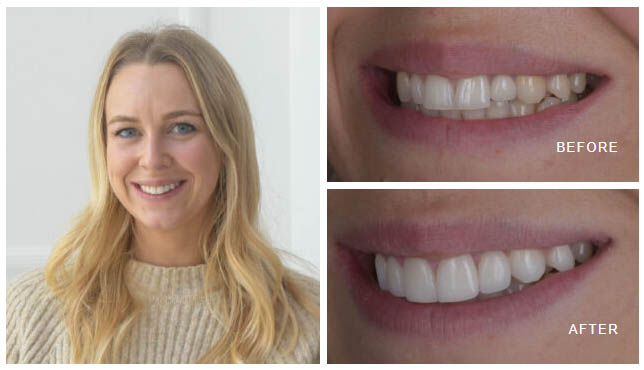
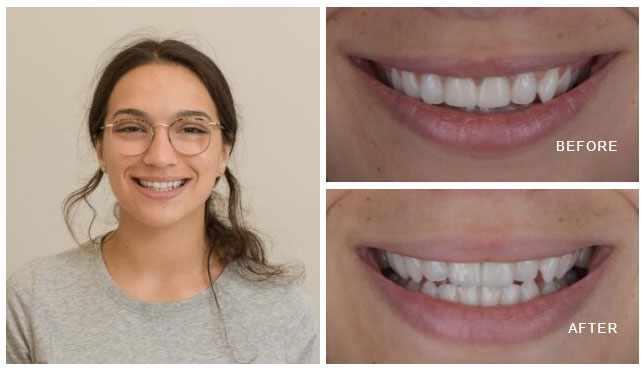
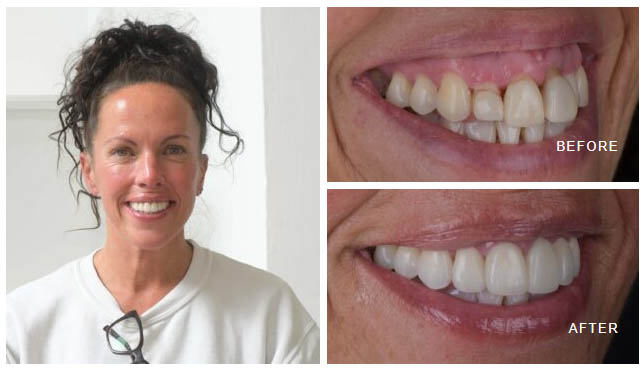
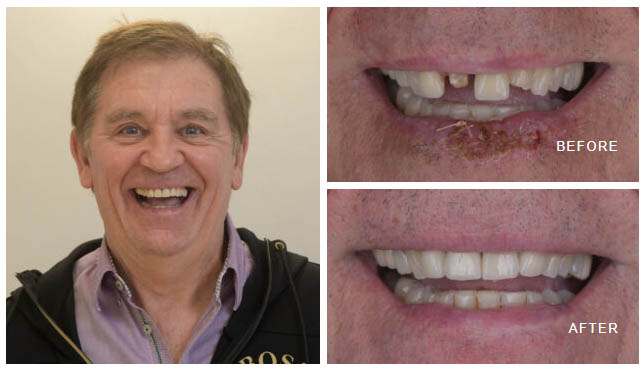
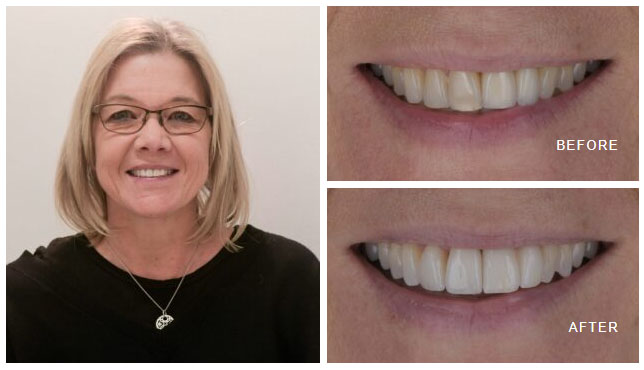
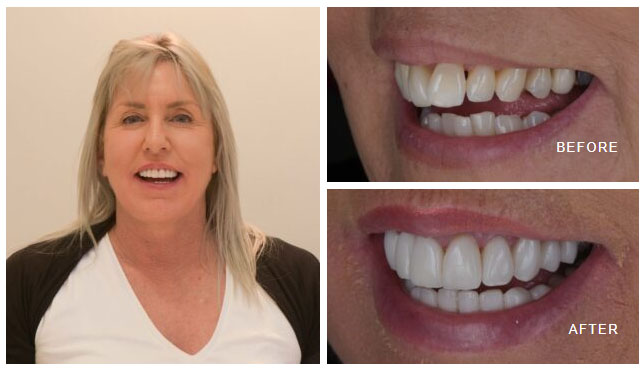
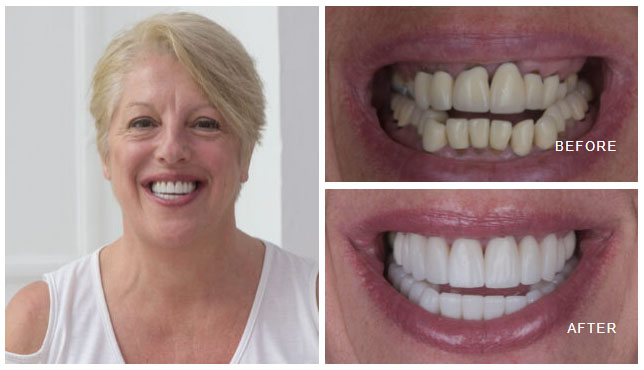
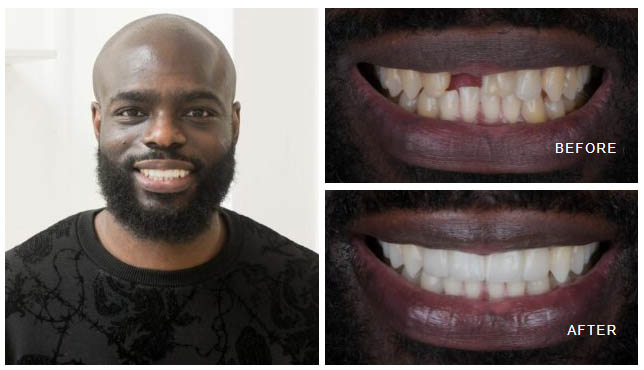
Dental Implants – Comprehensive Guidance
Following is our comprehensive guide to dental implants in London. This has been written by our lead implant dentist, Dr Sahil Patel in order to provide the most accurate information for those doing online research.
As the contemporary option of tooth replacement, implants involve a metallic or ceramic fixture that is screwed into the bone, and following a healing period (2-3 months), it may be built on to create an appearance of a tooth. The great advantage over other options is that it is standalone, meaning it will not affect the health of neighbouring teeth. In addition, aesthetic results and longevity 8-30 years based on home care and risk factors. If dental implants are required as part of your treatment plan, this will be arranged and sequence to support your ongoing dental treatment. For teeth that need to be extracted, we place the dental implant directly into the extraction sockets whenever possible.
Contact us for a consultation with one of our dental experts.
Placement Methods for Dental implants
Dental implants can be placed using two different methods:
Immediate placement occurs when the implant is inserted at the same time the tooth or teeth are extracted. This approach can shorten treatment time and help preserve bone. However, the feasibility depends on the condition of the bone at the time of extraction. If there is an infection, implant placement may need to be postponed for about three months to allow healthy bone to regenerate.
Delayed placement involves inserting the implant into an area where the tooth or teeth were removed or have been missing for a while.
The Process of Dental Implanting
Firstly, we would examine your teeth comprehensively, taking account of remaining teeth, the aesthetic and bite relationship as well as discussing your aims for treatment. Dental implants may just be one aspect of your overall dental plan, and our dentists will guide you through the staging and sequence. We would provide a written treatment plan with a cost estimate as well as some information materially important to your particular dental situation. This will allow you to make an informed decision to your healthcare.
If an implant is required, a CBCT scan (3D X-ray) would be arranged to allow us to assess the volume, quantity and quality of the bone you have. We use this data to plan the implant, and to avoid impinging on anatomical structures such as your dental nerve and sinuses. If you require a bone or gum graft to improve your success rate, this is explained in detail on our dedicated page Bone Grafts for Dental Implants.
On the day of Dental Implant Placement
We recommend eating a well-balanced meal 1-2 hours before your appointment. Wear comfortable clothes without make-up or jewellery. The procedure will almost always be undertaken under local anaesthetic, meaning you will be awake and safe to return home on the day of the procedure.
If requested, you may be asked to arrive early to take pre-surgery antibiotics; bring somebody with you that can drive you home and be prepared to take up to 2 days off work or usual activity following the procedure.
After Dental Implant Placement
After the procedure, you may experience some discomfort and swelling. The extent of swelling will depend on the number of implants placed and whether any additional surgeries were performed. In some cases, mild bruising around the affected area may occur, which should fade within a week. Smokers or individuals with medical conditions that impact soft tissue healing may experience more swelling. The gum tissue around the implants might temporarily change color, often becoming whitish, which usually resolves within two weeks.
After 6 to 10 days, once the soft tissue has healed enough, stitches will be removed unless dissolvable ones were used, in which case removal may not be necessary. During this time, wearing dentures may be difficult. Following this, the implants will be left undisturbed for at least three months to allow them to bond with the jawbone. During this period, the top of the implant may slightly protrude through the gum, making the metal visible.
Post-Operative Instructions for Implant Placement
- Bleeding: Do not rinse your mouth for six hours after surgery; this allows the blood clot to stabilise. You may experience some oozing (very small bleeding) for up to 72 hours after surgery. During recovery, soft foods like soup, fruit juices, pasta, eggs, fish, mashed potatoes, yogurt, and cereals will help ensure you get all the necessary nutrients.
- Post-Surgery Exercise: Do not do any type of exercise during the first 48 hours after implants or any type of bone graft is placed, as it will increase swelling and pain.
- Performing Arts: Musicians and creative artists should avoid singing/playing/performing and professional appearances for 14 days after implant placement or bone restoration due to the increased pressure in the oral cavity.
Designing and Manufacturing Implant Teeth
After 2 to 6-month period, a second surgical procedure may be needed to expose the implants and verify a solid attachment to the bone. If an implant has not integrated successfully, it can be easily removed, as it will not have bonded to the bone. Once the implants are exposed and stable, a post or abutment will be attached, which will serve to support a temporary denture or bridge.
This intermediate phase lasts about two months, allowing the gums to heal and form a tight seal around the implant abutment. During this time, the abutment may become visible as the gums shrink slightly, revealing some of the underlying metal. The final teeth will be designed to cover as much of this exposed metal as possible, enhancing the overall appearance. Impressions will be taken before the final restoration is created.
The fixture abutment, custom abutment or custom connection all refer to the part that connects the implant to the new tooth. This is custom made and is mechanically screwed into the implant to which the final restoration is fixed. Various materials are used according to the demands of the situation, ranging from white zirconia, silver metal, gold metal and in the case of an implant denture specialised adaptor abutments are used.
Treatment Timing
The overall treatment time will depend on the complexity of the case and the amount of bone and gum work needed. It’s important to note that each tooth is custom-made to fit your unique mouth and situation. This precision work requires significant time and cannot be rushed, as accuracy is critical. Before the final teeth are fitted, several appointments may be needed to make detailed adjustments. Therefore, it’s essential to keep us informed of any travel plans or important commitments so that we can accommodate your schedule accordingly.
Dental Implant Success Rate
Implants have a proven success rate of 95% and in rare cases an implant may not take to the jaw bone. Any potential problems specific to your implant treatment will have been anticipated and discussed with you before treatment starts. In the rare event of implant failure, this traditionally happens in the first stages of your treatment, during the healing stage. The course of action would be to remove the failed implant, allow the site to heal and place a new implant at no further cost to you.
At Marylebone Smile Clinic, we use Straumann Reference implants for their established long term evidence base, high build quality of prosthetic components and proven track record.
Causes of Dental Implant Failure and Problems
In general, the risk of dental implant failure is low, and there are no definitive conditions that completely prevent implant placement.
While dental implants offer numerous benefits, there are potential challenges, particularly for individuals with poor oral hygiene or heavy smokers. However, with proper care and expert treatment planning, these risks can be minimized. Unfortunately, some implant treatments—especially those done through “dental tourism” or “budget dentistry”—may prioritize speed and cost over long-term health, aesthetics, and stability. At our clinic, we have significant experience with implants, and we often help patients who need re-treatment after suboptimal procedures.
Several factors can increase the risk of complications or implant failure, including:
- Bone Integration Issues: Conditions like osteoporosis or autoimmune diseases can affect bone quality and healing around implants. Successful bone grafting, such as in sinus lifts, depends on a patient’s healing ability.
- Infection and Oral Hygiene: Maintaining excellent oral hygiene and attending regular dental cleanings is crucial to ensuring healthy healing around implants.
- Trauma: Just as natural teeth can be damaged by trauma, so too can implants.
- Bite Issues (Malocclusion): Misaligned teeth, such as overbites or crossbites, can create imbalanced forces in the mouth, putting undue pressure on implants. Addressing these issues before or during implant treatment can help prevent accelerated failure.
- Bruxism (Teeth Grinding): Habitual grinding or clenching of teeth can place excessive stress on implants. Solutions like night guards and habit-breaking strategies are often used to protect implants.
- Medical Factors: People over 60, smokers, and those with conditions like diabetes, postmenopausal women, or patients who have had radiation therapy are at a slightly higher risk for implant failure. Despite these factors, implant success rates are generally high, and most patients can still be good candidates for treatment.
- Lifestyle Factors: Smoking and heavy alcohol use can negatively impact implant success and healing. Quitting smoking can greatly improve outcomes, as smoking significantly increases the risk of implant failure.
- Post-Treatment Care: Implants require ongoing maintenance, similar to natural teeth. After the procedure, regular check-ups and hygiene appointments will be necessary to ensure long-term health and stability.
- Implant Positioning: Proper implant positioning is critical for both cleaning and supporting the gum and tooth. Misaligned implants can lead to gum disease and bone loss, though with expert placement, these risks are greatly reduced.
Implants are the Gold Standard for Dentists
Dentists consider the dental implants as the gold standard permanent solution and the closest replacement for a natural tooth. With expert care and attention, dental implants can provide lasting results. Proper planning, personalised treatment, and consistent follow-up care are key to a successful and long-lasting implant.
The best implant dentist will be the ones with the technical knowledge of implant planning-placement combined with the creative ability to colour match and design natural looking teeth. Both skills are required to provide tooth replacements that appear realistic. Dr Sahil Patel has been externally judged to be the best cosmetic dentist in London but please head over to our Gallery to judge for yourself!
Dental Implants Pricing
Implants at Marylebone Smile Clinic are priced starting from £3795 per tooth and this includes:
- Implant Consultation and Cone Beam CT Scan
- Implant Fixture Placement
- Custom Implant Connection (Abutment)
- Bespoke Colour matched Ceramic Tooth
Our implant work is protected by a 5 year guarantee which ensures your investment is safeguarded.
Implant Bone Grafts are priced from £995 per site and the complexity of your specific situation will be discussed with you at your consultation. Small bone grafts associated with immediate implant placement (after tooth extraction are the simplest bone grafts and are associated with a very high success rate. In the event this approach is not available or appropriate, rigid mesh bone grafts are suitable for more significant grafts using a non-resorbable membrane that is kept in place for 9 months or more. For more detail follow this link to our bone grafts page.
Implant Gum Grafts are priced from £995 per site and this involves using collagen from the roof of the mouth to the implant site where the gum is receded or susceptible to gum recession. The long term aesthetic and functional stability of implants (and teeth) is determined in part by the stable gum collar around the tooth itself, and this is the part we aim to modify/thicken/strengthen to perfect the results. Read more here
Below is an example of an immediate implant placement with a minor bone graft and collagen gum graft. A temporary bridge is in place to allow the gum and implant to heal (3 months) prior to designing the implant teeth.
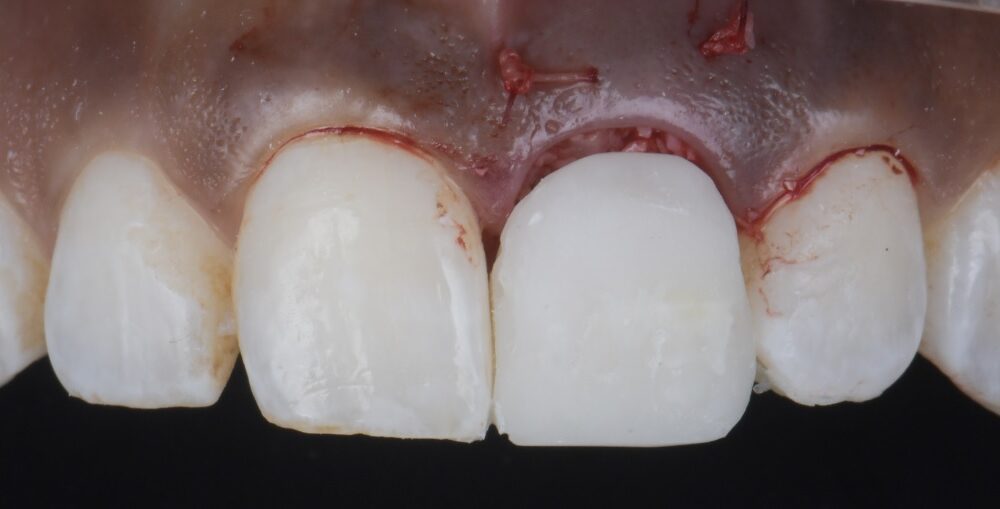
FAQ's
Bone has no pain sensory pain fibres so once you have been numbed using a local anaesthetic, the procedure is painless. It can be uncomfortable for a few days and anti-inflammatories such as Ibuprofen are usually sufficient to control this discomfort. You will experience some discomfort and swelling in the facial region post-surgery, possibly with some bruising, which may last up to two weeks. This is normal and part of the healing process.
The longevity of dental implants is influenced by home care, hygiene therapy, nature of the implant position and stability within the mouth as whole.
The clinical data shows us that dental implants can last up to 30 years in optimal conditions. This can range from 8-30 based on the various factors above.
Absolutely yes! In fact, dental implants are more resilient to impact and biting forces than a natural tooth. There are no restrictions on your diet.
Dental implants allows us to eat a normal diet and restore natural aesthetics in our smile for many decades. We feel that they are an invaluable treatment to slow our aging process.
At Marylebone Smile Clinic, our dental implants start from £3495. This is an all-inclusive fee for one tooth, including your consultation, 3D bone scan, implant placement, custom connection and implant crown.
Our lead dentist is Accredited by the BACD, which is an anonymised and rigorous assessment of clinical outcomes and success rates. Dr Sahil Patel is a national leader in tooth replacement involving dental implants and regularly teaches dentists how to improve outcomes for patients. We feel that any tooth replacement should be an aesthetically optimised result and to this end we are established as one of the preeminent clinics to manage complex tooth replacement with implants.
Please see our Dental Implant Smile Gallery to view the results we have achieved from single to multiple tooth replacement with implants.
Our team engage with the international dental implant community to bring the best and most effective methods to the UK from the European Academy of Osseointegration. This scientific academy involves several thousand dentists across the world to combine our data and experience to bring about better results for our patients. Furthermore, Dr Sahil Patel is active within the Straumann International Team for Implantology in the UK, which brings together many dentists to optimise outcomes.
Where possible, if is advisable to replace the tooth at the same moment of extracting the natural tooth. This immediate approach allows the bone and gum architecture to be maintained, which is ideal for health and aesthetics. Please note this is only possible if the natural tooth is not actively infected at the time of extraction.
If the tooth is already missing, the implant should be placed as soon as practically possible to avoid further shrinking or loss of jaw bone tissue. Once a tooth is lost, the bone naturally shrinks creating a finite timeframe for an implant to be placed.
During your consultation and 3D Xray phase, we will identify if you need a bone graft prior to the implant being placed. Please see our dedicated guide on Bone Grafts for Dental Implants.
There are over 500 implant manufacturers worldwide, and they all display varying degrees of clinical research, build quality, component availability, distribution and support. Our team regularly reviews new implant brands and tests them for any superior characteristics they may have.
From your point of view, we feel the largest and most widely distributed implant designs will be the simplest systems to maintain long term. Each implant brand has several components that are specific to your case and we are familiar with over 35 systems including Straumann, Nobel Biocare, Biomet 3i, BioHorizons, MegaGen, Euroteknika, DTI, Bicon, Branemark, Ankylos, Xive, Astra TX/EV, MIS, Implant Direct, Dentium, Osstem, B&B, Jet Implants, DIO, Camlog, Intralock, SNUCOne, Alpha BioTech, Uniqa, Sweden Martina, Neodent, Southern Implants, Neoss, Anthogyr, Bredent, Mars.
The largest implant manufacturers worldwide are Straumann, Nobel Biocare, Denstply Sirona, Osstem, MegaGen, BioHorizons, Biomet 3i.
At Marylebone Smile Clinic, we use Straumann Reference implants for their established evidence base supporting their long-term success. We feel they display excellent build quality across their various designs, have a consistent machining process, customer support in the event of complications and as result they are considered one of the best implant systems in the UK.
VIRTUAL CONSULTATION






